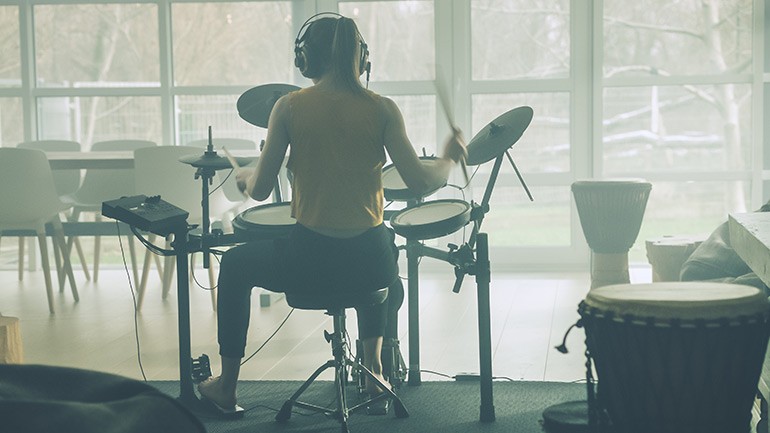Click Track: Friend or Foe?
The pros and cons of working with a programmed beat such as a drum sample or basic synth, and why the benefits often outweigh any inconvenience

For some, using a mechanized rhythm or “click track” when setting up a recording session is indispensable; for others, it can be an unnecessary annoyance (ask any drummer who hates being tethered to a robotic beat). Here we look at some of the pros and cons of working with a click, and why the benefits—including easier editing, the ability to choose your song’s tempo in advance, and more—often outweigh any inconvenience.
Click cons. While there are many advantages to using a click track, there are times when having a regimented rhythm can be a detriment. When writing, clicks tend to discourage the use of tempo changes or multiple time signatures within a song. You’ll also want to avoid bringing in a predetermined beat when recording multiple players live, particularly if it’s a jazz combo, jam band or other improvisatory group. Not only will you need a set of headphones for each participant, you’ll also have to crank the click volume so that it’s audible above the live leakage. For this reason, click tracks tend to work best when assembling songs one layer at a time, either as an anchor for a multitrack demo, or to be fed directly to a drummer while laying down the foundation track.
Beat benefits. For one thing, having a rock-solid rhythm throughout ensures carefree editing later on—that is, you could copy the backing for your first chorus, then paste it where the second chorus comes in without hearing any audible tempo differences. Even if you have an available drummer who is a brilliant timekeeper, it can be helpful to create a click track on the fly in order to continue building the new song, then replacing your robo-Ringo with a real kit after the fact. Doing so allows you to experiment with different beats-per-minute (BPM) settings in order to determine the best fit for your song (such as 120 for a dance track, 85 for a slow-churn rocker, and so forth). To help make the click easier to follow, consider accenting the “one” so that the drummer or other player can easily hear the downbeat in each measure (or when in doubt, use a bass-drum beat playing quarter notes throughout). Remember you can choose to leave all, some or none of the click in the final mix, so whatever beat you create doesn’t necessarily have to be sonically pleasing (though it doesn’t hurt to have a good-sounding click right from the get-go).
Click track tricks. In the traditional sense, a click track implies a steady robotic beat typically associated with drum machines, loops and other mechanized devices. Accordingly, purists tend to balk at the imposition of these artificial rhythms within an otherwise organic backing track, even as a temporary solution.
However, there are other, more aesthetically pleasing ways of creating an unswerving backbeat for your demo. A musical loop is one method—this might include a synthesized, pulsating bass or keyboard part that follows the chord progression and can even be incorporated into the final product if you so choose. Even something as simple as a guitar or keyboard plugged into a tremolo pedal with the repeat effect set to the desired tempo can easily do the trick.
Natural loops. If you’re seriously offended by faux rhythms, you might consider looping a real drum track from a preexisting session. Freeware such as Audacity makes this a relatively simple procedure—all you need is a few solid 8-bar sections, a couple of fills to join them together, and little bit of editing dexterity. Once you have the part laid out you can then speed up or slow down the track to match the desired tempo of your new work.






Community
Connect with BMI & Professional Songwriters